#Joan Martí
Explore tagged Tumblr posts
Note
Hello! Another tumblr user I follow has posed a challenge: memorize one poem per month in 2024. I would like to include at least one poem in Catalan in my journey. Could you recommend any good poems or poets for this?
Hello! We have many very talented poets. My favourite poet is Salvador Espriu, other good ones are Miquel Martí i Pol, Vicent Andrés Estellés, Jacint Verdaguer, Maria-Mercè Marçal, Pere Quart, Josep Carner, Ausiàs March, Joan Maragall, Montserrat Abelló, J.V. Foix, Gabriel Ferrater, Joana Raspall, Joan Alcover, Enric Casasses, among others.
I'll add 7 of my favourite short/short-ish poems (+translation to English) under the cut. Poetry is very personal and these are just the ones that I really like, but I'll be happy if anyone else wants to add more of their favourite Catalan poems.
1. Enyore un temps que no és vingut encara (I Miss a Time That's Not Yet Come) by Vicent Andrés Estellés.
Enyore un temps que no és vingut encara com un passat d’accelerada lluita, de combatius balcons i d’estendards, irat de punys, pacífic de corbelles, nou de cançons, parelles satisfetes, el menjador obert de bat a bat i el sol entrant fins al darrer racó. Em moriré, però l’enyore ja, aquest moment, aquest ram, aquest dia, que m’ha de fer aixecar de la fossa veient passar la multitud contenta.
Translation:
I miss a time that has not arrived yet like a past of accelerated fight, of combative balconies and standards, angry of fists, peaceful of sickles, new of songs, satisfied couples, the living room wide open and the sun entering until the last corner. I will die, but I miss it already, this moment, this bouquet, this day, that shall make me get up from the grave watching the happy crowd pass by.
2. Assaig del càntic en el temple (Attempted Canticle in the Temple) by Salvador Espriu.
Oh, que cansat estic de la meva covarda, vella, tan salvatge terra, i com m’agradaria d’allunyar-me’n, nord enllà, on diuen que la gent és neta i noble, culta, rica, lliure, desvetllada i feliç! Aleshores, a la congregació, els germans dirien desaprovant: «Com l’ocell que deixa el niu, així l’home que se’n va del seu indret», mentre jo, ja ben lluny, em riuria de la llei i de l’antiga saviesa d’aquest meu àrid poble. Però no he de seguir mai el meu somni i em quedaré aquí fins a la mort. Car sóc també molt covard i salvatge i estimo a més amb un desesperat dolor aquesta meva pobra, bruta, trista, dissortada pàtria.
Translation:
How tired I am of this my craven, ancient, savage fatherland; and how it would delight me to leave, going north, where they say that people are noble and clean, cultured, rich, free, awake/unsupervised and happy! Then, my brethren would tell the congregation, disapprovingly: "Leaving his native place, a man becomes like a bird leaving the nest", while I, in the distance, would laugh at the law and the ancient wisdom of this my arid people. But the dream will never be followed, I’ll stay here until my death. For I too am full of cowardice and savagery, and with a desperate pain I love this my poor, unclean, sad, unlucky fatherland.
3. Divisa (Motto) by Maria-Mercè Marçal. This one's short and easy!
A l’atzar agraeixo tres dons: haver nascut dona, de classe baixa i nació oprimida. I el tèrbol atzur de ser tres voltes rebel.
Translation:
I am grateful to fate for three gifts: to have been born a woman, from the working class and an oppressed nation. And the turbid azure of being three times a rebel.
4. Possible introducció a un epitalami (Possible Introduction to an Epithalamium) by Salvador Espriu
I posted this a while ago, find the text and translation in this post:
5. Plus Ultra ("Further" in Latin) by Jacint Verdaguer
Text and translation in this post:
6. Aquesta remor que se sent (This Murmur We Hear) by Miquel Martí i Pol.
Text and translation in this post:
7. Mester d'amor (Knowing How to Love) by Joan Salvat-Papasseit
Si en saps el pler no estalviïs el bes que el goig d'amar no comporta mesura. Deixa't besar, i tu besa després que és sempre als llavis que l'amor perdura. No besis, no, com l'esclau i el creient, mes com vianant a la font regalada. Deixa't besar -sacrifici fervent- com més roent més fidel la besada. ¿Què hauries fet si mories abans sense altre fruit que l'oreig en ta galta? Deixa't besar, i en el pit, a les mans, amant o amada -la copa ben alta. Quan besis, beu, curi el veire el temor: besa en el coll, la més bella contrada. Deixa't besar i si et quedava enyor besa de nou, que la vida és comptada.
Translation:
If you know its pleasure, don't skip the kiss for the joy of loving has no measure. Let yourself be kissed, and kiss after it for it's always on the lips that love lasts. Don't kiss, no, like the slave and the believer, but like the passer-by does with a delightful fountain. Let yourself be kissed -fervent sacrifice- the more burning, the more faithful is the kiss. ¿What would you have done if you died before without fruit other than the zephyr on your cheek? Let yourself be kissed, and on the chest, on the hands, male or female lover -the cup raised high. When you kiss, drink; may the glass cure the fear: kiss on the neck, the most beautiful place. Let yourself be kissed and if there's yearning left kiss again, for life is finite.
These are some I like. You can find more Catalan poems in this blog's tag #poesia.
#poesia#literatura#arts#ask#3bearsand10000rats#poetry#literature#poems#catalan#català#valencià#coses de la terra#romance languages#vicent andrés estellés#salvador espriu#maria-mercè marçal#maria mercè marçal#jacint verdaguer#miquel martí i pol#joan salvat-papasseit
32 notes
·
View notes
Text



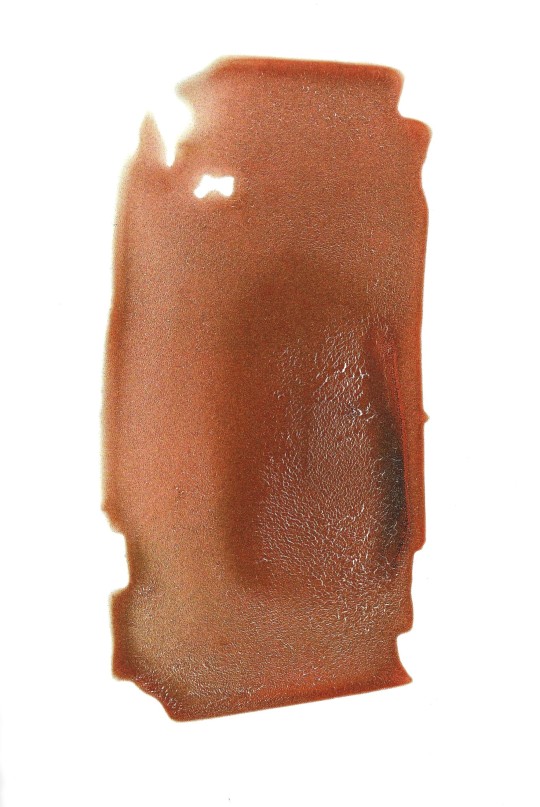

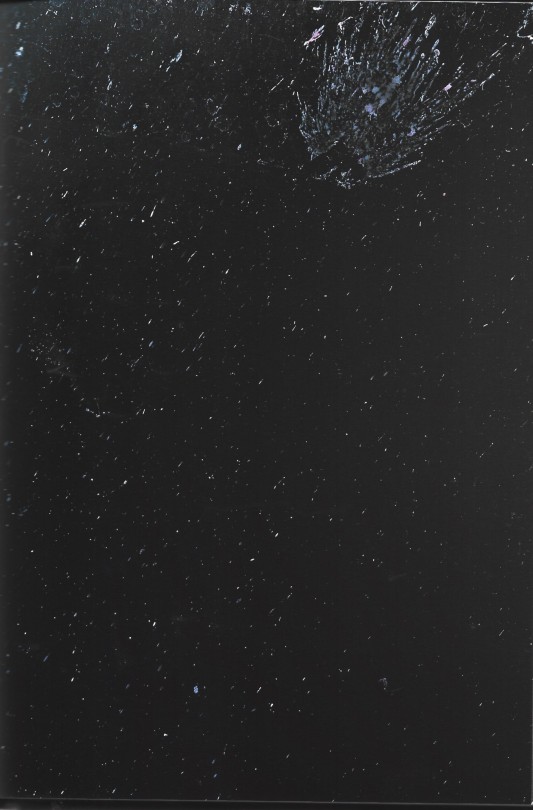

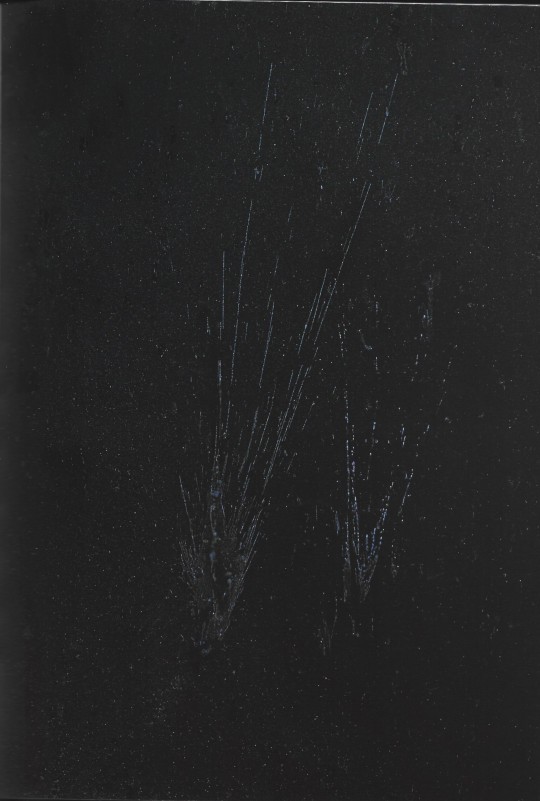
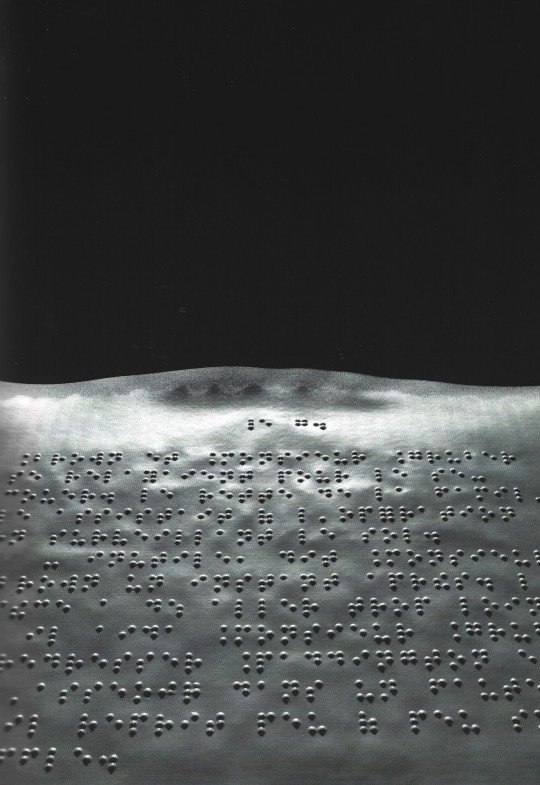
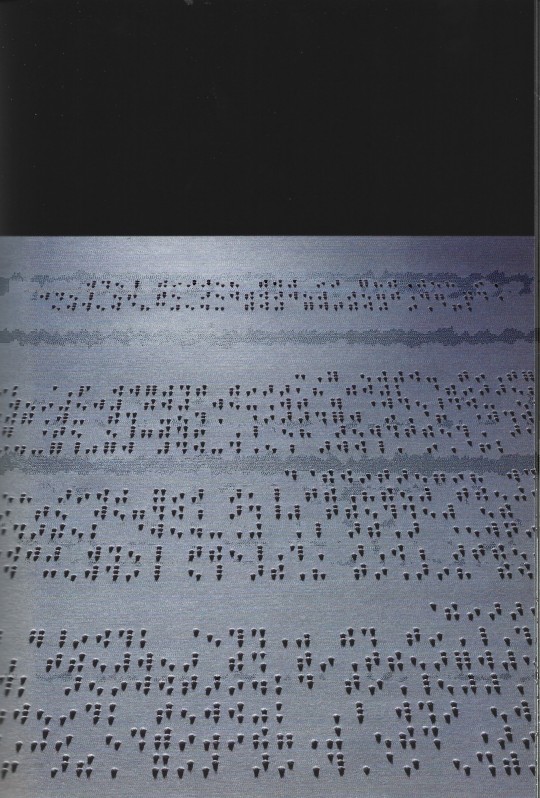


Joan Fontcuberta Twilight Zones
Essays (in English) by Jorge Wagensberg, Martí Peran and Anatxu Zabalbeascoa.
Graphic Design Ramon Prat, Collaboration Leandre Linares, Anna Tetas
Exhibion Curator Anatxu Zabalbeascoa, Coordination Carmen Diaz
Actar Publishing, Barcelona 2000, 160 pages, Hardcover, with 75 four-color plates and additional color and black and white illustrations finely printed full-bleed on heavy paper by Ingoprint, 17x24,5cm, ISBN 84-95272-15-2
euro 50,00
email if you want to buy : [email protected]
A beautiful exhibition catalogue that presents three of Fontcuberta's most minimalist and poetic series: Haemograms, Constellations, and Semiopolis, together with fine essays.
This book brings together three recent projects by international artist Joan Fontcuberta, "Constellations", "Haemograms",and "Semiopolis", featuring images of dramatic celestial landscapes, science fiction urban utopias, and abstract and minimalist smears of blood.
Includes an exhibition history and selected bibliography.
25/10/23
#Joan Fontcuberta#Twilight Zones#art exhibition catalogue#Haemograms#Constellations#Semiopolis#art books#fashionbooksmilano
17 notes
·
View notes
Text
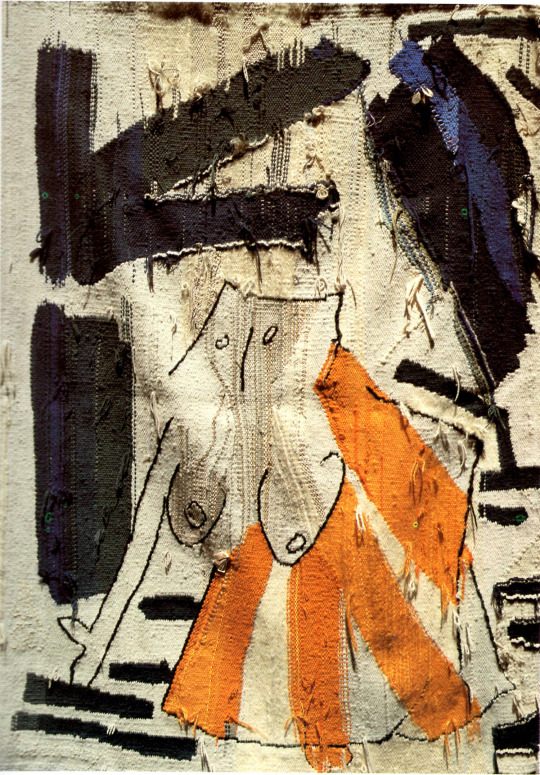
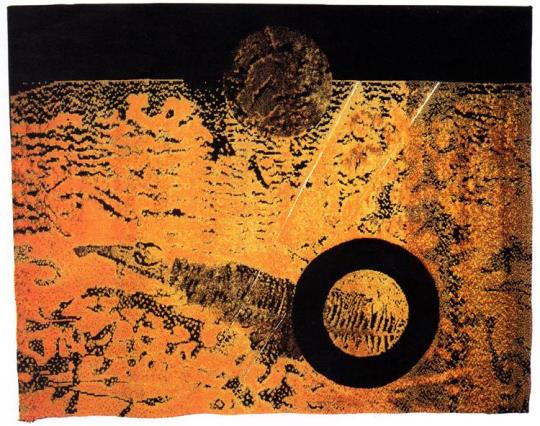



Carles Delclaux Is (born 1951, Sant Cugat del Vallès, Spain) is a textile artist trained in the Aymat factory and in the Massana School of Fine Arts in Barcelona.
From 1970 to 1974 he directed the Catalan School of Tapestry. In 1975 he moved to Girona, where he held a chair in tapestry, rooted in academicism and on learning the craft of weaver.
He has recreated works of many artists, reinterpreting: Grau-Garriga, Joan-Josep Tharrats, Subirachs, Joan Miró, Millares, Beulas, Cuixart, Pere Lloses, Fita, Comadira, Torralba, Torres Monsó, Marcel Martí and others. His own designs evolve tapestry for a renaissance in the third millennium. (from wiki)
5 notes
·
View notes
Note
You read a lot non-fiction what I call "colon books" ("Title: Longer Subtitle"). What are some of your favourite or latest fiction books that you've read?
Even if it’s not your ideal genre, there has to be a more pleasant way of talking about non-fiction titles than calling them “colon books”, right? That sounds like a pretty gross section of the library.
I must admit that I’ve never been a big reader of fiction. I read a lot of books, but fiction has always been a pretty small percentage of them. I don’t have anything against fiction books and, quite frankly, I wish I had more of an interest in them because I believe reading from a broader, more diverse group of genres opens up your mind to a wider array of viewpoints. But I just can’t lose myself in fiction as easily as I do in non-fiction — and I know that not only sounds ridiculous but kind of proves how important it probably is for me to actually read more fiction in order to expand my horizons and build a healthier imagination.
When I do read fiction, it usually is because I like the work of specific authors and don’t want to miss whatever they write. One odd thing is that while I very rarely (almost never, in fact) re-read non-fiction books, when it comes to fiction, I usually stick with the same small collection of favorite authors and often re-read their work.
And if I’m not reading non-fiction, there’s a pretty good chance that I’m reading poetry instead of a novel or some sort of traditional prose fiction. Like I said, it’s probably more of a failure of imagination than anything, but while I respect and appreciate great literature and creative fiction, I just prefer reading stuff that feels more realistic. I couldn’t even guess what the last science fiction book I read was. I have several thousand books in my personal library, but I’m willing to bet that I have less than a half-dozen sci-fi books. My taste in movies or TV shows is pretty similar; I rarely watch sci-fi or fantasy. Even as a kid I was never able to get into them.
So what type of fiction books do I read whenever I actually do pick up something other than non-fiction?
I’ve been pretty vocal over the years about my appreciation/admiration/awe for the work of Sam Shepard. Everything he wrote — from his plays to his prose to poetry to his short story collections — amazes me as a reader and makes me insanely jealous as a writer. I have every book he ever published and just about every play or collection of plays, and I re-read him more than anybody else.
I’m also a huge fan of John Steinbeck and Joan Didion. I think I have just about everything that Steinbeck ever published and I have phases when I fall into a Steinbeck rabbit hole and just tunnel through my Library of America collection of his work, which are treasures. I didn’t get into Joan Didion’s writing until later, so I’m still reading some of her stuff for the first time. I think the fact that I’m from Northern California like Steinbeck (from Salinas) and Didion (who was from Sacramento originally, just like me) helps me put myself in their work in a more intimate way than when I’m trying to read most other writers of fiction. I need that kind of connection to lock on to fiction in the way that I’m able to do with non-fiction. Plus, Steinbeck and Didion also wrote some great non-fiction, so I can get the best of both worlds. Two other authors that I’ve read and re-read many times are Cuba’s heroic founding father, freedom fighter, and martyred revolutionary José Martí and the ingenious, acerbic Ambrose Bierce whose satirical The Devil's Dictionary (BOOK | KINDLE) has miraculously maintained its edginess and razor-sharp humor despite being originally written over 125 years ago.
There’s really not a lot of contemporary fiction that I read. I’m sure I’d find some great stuff if I gave it the chance, but there’s only so many hours in the day that I have to read, so I do tend to give it over to non-fiction, as you might notice when I answer the questions about the books I’ve been recently reading! So, if I am reading fiction, it’s almost always older stuff that I’m finally getting around to reading. During the pandemic, I got lost in the work of Jorge Luis Borges, who I had not spent much time with previously, but I pored through his fiction and poetry. Two more books that I also frequently re-read or pull of the shelves to read pieces of are Baltasar Garcián’s The Art of Worldly Wisdom (BOOK | KINDLE), which was first published in 1647 but still feels fresh 375 years later, and Fernando Pessoa’s brilliant, posthumously published The Book of Disquiet (BOOK | AUDIO | KINDLE).
As for the poets you’ll find on my shelves, it’s probably who you’d expect: Pablo Neruda, Langston Hughes, Edna St. Vincent Millay, Hafiz, Matthew Arnold, William Blake, and Federico García Lorca. Like I mentioned earlier, Sam Shepard and José Martí are two of my favorites for their prose and poetry. I’d especially recommend Shepard’s 1973 book Hawk Moon: Short Stories, Poems, Monologues and Motel Chronicles (BOOK | KINDLE), published in 1982 by the legendary Lawrence Ferlinghetti at San Francisco’s iconic City Lights Books. José Martí’s greatest work is Versos Sencillos (BOOK | KINDLE), originally published in Spanish 1891 but I recommend the excellent dual-language edition translated by Anne Fountain and published by McFarland & Company in 2005. One other poetry book that is always pretty close to my desk is Yevgeny Yevtushenko’s wonderful The Collected Poems, 1952-1990.
And last but not least — but certainly the least surprising — is William Shakespeare. I love Shakespeare. I don’t think that this is a controversial opinion, but Shakespeare is fucking amazing. You guys can share that secret with other people if you feel the need to do so. If someone put a gun to my head and told me I had to pick only three books to read for the rest of my life, the first thing I would do would be to choose Shakespeare’s Complete Works. Actually…the first thing I would do would be to ask why that person felt the need to put a gun to my head just to choose three books to read. That seems unnecessarily aggressive and wildly inappropriate for the task at hand. But after chastising them for their needlessly dangerous tactics, I would choose Shakespeare’s Complete Works — specifically the latest Norton edition with Stephen Greenblatt as general editor (BOOK | DIGITAL).
#Books#Book Suggestions#Book Recommendations#Fiction#Poetry#Prose#Literature#Non-Fiction#Not Non-Fiction#Suggested Books#Reading List#William Shakespeare#Yevgeny Yevtushenko#José Martí#Sam Shepard#Hawk Moon#Motel Chronicles#Versos Sencillos#Fernando Pessoa#The Book of Disquiet#Baltasar Gracián#The Art of Worldly Wisdom#Pablo Neruda#Langston Hughes#Edna St. Vincent Millay#William Blake#Hafiz#Matthew Arnold#Federico Garcia Lorca#Jorge Luis Borges
10 notes
·
View notes
Text
VKL Abogados Catalunya Central

VKL Abogados está formado por un cluster de Bufetes de Abogados con equipos de Abogados que disponen de una amplia experiencia en Derecho Civil, Mercantil, Laboral y Penal ofreciendo servicios a Corporaciones, Sociedades Patrimoniales, Sociedades, Clubs Deportivos, Autónomos, Instituciones, Fundaciones, ONG, Organizaciones, Cooperativas, Particulares, Empresas, Entidades y Asociaciones en Catalunya Central.
Visita nuestra web:
vklabogadoscatalunyacentral.es
Ofrecemos servicios en:
Aguilar de Segarra, Alpens, Artés, Avià, Avinyó, Bagà, Balenyà, Balsareny, Berga, Borredà, Calders, Calldetenes, Callús, Cardona, Casserres, Castellar de n'Hug, Castellbell i el Vilar, Castellcir, Castellfollit del Boix, Castellgalí, Castellnou de Bages, Castellterçol, Centelles, Cercs, Collsuspina, el Brull, el Pont de Vilomara i Rocafort, Espinelves, Folgueroles, Fonollosa, Gironella, Gósol, Guardiola de Berguedà, Gurb, l' Espunyola, l' Esquirol, l' Estany, la Coma i la Pedra, la Pobla de Lillet, les Masies de Roda, les Masies de Voltregà, Lladurs, Llobera, Lluçà, Malla, Manlleu, Manresa, Marganell, Moià, Monistrol de Calders, Monistrol de Montserrat, Montesquiu, Montmajor, Muntanyola, Mura, Navarcles, Navàs, Navès, Odèn, Olius, Olost, Olvan, Orís, Oristà, Perafita, Pinell de Solsonès, Pinós, Prats de Lluçanès, Puig-reig, Rajadell, Riner, Roda de Ter, Rupit i Pruit, Saldes, Sallent, Sant Bartomeu del Grau, Sant Boi de Lluçanès, Sant Feliu Sasserra, Sant Fruitós de Bages, Sant Hipòlit de Voltregà, Sant Joan de Vilatorrada, Sant Julià de Cerdanyola, Sant Julià de Vilatorta, Sant Llorenç de Morunys, Sant Martí de Centelles, Sant Mateu de Bages, Sant Pere de Torelló, Sant Quirze de Besora, Sant Quirze Safaja, Sant Salvador de Guardiola, Sant Vicenç de Castellet, Sant Vicenç de Torelló, Sant Eugènia de Berga, Sant Eulàlia de Riuprimer, Sant Maria d'Oló, Santpedor, Seva, Solsona, Sora, Súria, Talamanca, Taradell, Tavèrnoles, Tona, Torelló, Vallcebre, Vic, Vilada, Viladrau, Vilanova de Sau.
0 notes
Note
I'm going to university now (in Germany) and the uni i'm at offers catalan as a side course. Tomorrow i'll finally be at an event where they introduce the subject among others. I'M SO EXCITED!!!!! ^^ Finally! >< Sadly, there won't be a class for catalan literature (omg actually - if you have recommendations of important works from the recent centuries, i'd love to hear, but i'm just rambling, no pressure xD). There will be linguistics and speech praxis. I can't wait! :D
That's great!! I hope you enjoy it very much ☺️
Some of the modern classics (from the late 19th century to the present):
L'Atlàntida (Atlantis, 1877) by Jacint Verdaguer. Epic poem that re-interprets history and legends. Jacint Verdaguer is the most representative poet of the Renaixença/Romanticism movement in Catalan literature.
Other poems by Jacint Verdaguer (1845-1902) and Joan Maragall (1860-1911) are the most important poetry of the Renaixença.
The theatre plays Terra Baixa (usually published in English with the title Martha of the Lowlands, 1896) by Àngel Guimerà. Also Mar i cel ("Sea And Sky", 1888) by him.
La febre d'or ("The gold fever", 1892) by Narcís Oller, the most representative of the realist movement.
The monologue La infanticida ("The Child Murderer", 1898) by Víctor Català (pseudonym of Caterina Albert). And her novel Solitud ("Loneliness", 1905), which is considered the most representative book of the modernist and naturalism movement in Catalan literature.
The satirical theatre plays by Santiago Rusiñol like L'auca del senyor Esteve (1917) —personally I really like his play El bon policia ("The Good Policeman", 1905).
The theatre play El cafè de la Marina ("The Marina Café, 1933) by Josep Maria de Segarra.
Poetry by Pere Quart (1899-1986)
La Plaça del Diamant (it has been translated to English with the titles In Diamond Square and The Time of the Doves, 1962) by Mercè Rodoreda. Her novels Mirall trencat ("Broken Mirror", 1974), La mort i la primavera (Death in Spring, 1986) and Aloma (1938) are also iconic.
The short stories books by Pere Calders, most famously Cròniques de la veritat oculta ("Chronicles of the Hidden Truth", 1955).
The short stories book El cafè de la Granota (1985) by Jesús Montcada,
Poetry: Josep Carner (1884-1970), J.V. Foix (1893-1987).
The novel Bearn, o la sala de les nines ("Bearn, Or The Doll Room", 1961) by Llorenç Villalonga.
Poetry: Vicent Andrés Estellés (1924-1993), Salvador Espriu (1913-1985), Maria Mercè Marçal (1952-1998), Miquel Martí i Pol (1929-2003).
The essays by Joan Fuster, most importantly Nosaltres, els valencians ("We, the Valencians", 1962).
Mecanoscrit del Segon Origen (Typescript of the Second Origin, 1974) and Totes les bèsties de càrrega ("All The Load Beasts"?, 1967) by Manuel de Pedrolo, also personally by him I really liked the sci-fi short stories collection Trajecte Final ("Final Journey", 1975), and I will add my dad would be upset if I didn't mention his theatre play Homes i no ("Men and no", 1957).
Incerta glòria (Uncertain Glory, 1971) by Joan Sales.
Les veus del Pamano (Voices of the Pamano, 2004) and Jo confesso (I Confess, 2011) by Jaume Cabré.
I know some of them, at least Jaume Cabré's novels, Àngel Guimerà's plays, Uncertain Glory, and some Mercè Rodoreda novels have been published in German and/or English. In fact, Voices of the Pamano was a huge success in Germany.
I hope you enjoy the class very much!
46 notes
·
View notes
Text
VKL Abogados Laboralistas Girona

Somos un clúster de Despachos y Bufetes de Abogados Laboralistas, con equipos de Abogados Laborales expertos en Derecho Laboral seleccionados por criterios de confianza y profesionalidad. Le ponemos en contacto con los Abogados Laborales mejor adaptada para sus necesidades en Girona.
Visita nuestra web:
vklabogadoslaboralistasgirona.es
Ofrecemos servicios en:
Agullana, Aiguaviva, Albons, Amer, Anglès, Arbúcies, Avinyonet de Puigventós, Banyoles, Bàscara, Begur, Bellcaire d'Empordà, Besalú, Bescanó, Blanes, Bordils, Borrassà, Breda, Cabanes, Cadaqués, Caldes de Malavella, Calonge i Sant Antoni, Camós, Campdevànol, Campmany, Camprodon, Canet d'Adri, Cassà de la Selva, Castell d'Aro, Castellfollit de la Roca, Castelló d'Empúries, Celrà, Cervià de Ter, Colera, Corçà, Cornellà del Terri, Cruïlles, Monells i Sant Sadurní de l'Heura, Darnius, el Far d'Empordà, el Port de la Selva, Figueres, Flaçà, Fogars de la Selva, Fontcoberta, Fornells de la Selva, Fortià, Garriguella, Girona, Hostalric, l' Armentera, l' Escala, la Bisbal d'Empordà, la Cellera de Ter, la Jonquera, la Vall d'en Bas, la Vall de Bianya, les Planes d'Hostoles, les Preses, Lladó, Llagostera, Llambilles, Llanars, Llançà, Llers, Lloret de Mar, Maçanet de Cabrenys, Maçanet de la Selva, Massanes, Mont-ras, Montagut i Oix, Navata, Olot, Palafrugell, Palamós, Palau-saverdera, Pals, Pau, Peralada, Platja d'Aro, Pont de Molins, Porqueres, Portbou, Quart, Ribes de Freser, Riells i Viabrea, Ripoll, Riudarenes, Riudellots de la Selva, Roses, Salt, Sant Climent Sescebes, Sant Feliu de Buixalleu, Sant Feliu de Guíxols, Sant Feliu de Pallerols, Sant Gregori, Sant Hilari Sacalm, Sant Jaume de Llierca, Sant Joan de les Abadesses, Sant Joan de Mollet, Sant Joan les Fonts, Sant Jordi Desvalls, Sant Julià de Ramis, Sant Julià del Llor i Bonmatí, Sant Martí de Llémena, Sant Miquel de Fluvià, Sant Pau de Segúries, Sant Pere Pescador, Sant Coloma de Farners, Sant Cristina d'Aro, Sant Pau, Sarrià de Ter, Saus, Camallera i Llampaies, Serinyà, Sils, Torroella de Fluvià, Torroella de Montgrí, Tortellà, Tossa de Mar, Ullà, Vall-llobrega, Ventalló, Verges, Vidreres, Vila-sacra, Vilabertran, Vilablareix, Vilademuls, Vilafant, Vilajuïga, Vilamalla, Vilobí d'Onyar, Vulpellac, Fonteta i Peratallada.
0 notes
Text

VKM Reformas Oficinas Girona
Somos un cluster de Empresas de Reformas, Rehabilitación e Interiorismo. Le ponemos en contacto con los mejores profesionales expertos adaptados para sus necesidades en Reformas de Oficinas en Girona.
Visita nuestra web:
https://www.vkmreformasoficinasgirona.es
Ofrecemos servicios en:
Agullana, Aiguaviva, Albons, Amer, Anglès, Arbúcies, Avinyonet de Puigventós, Banyoles, Bàscara, Begur, Bellcaire d'Empordà, Besalú, Bescanó, Blanes, Bordils, Borrassà, Breda, Cabanes, Cadaqués, Caldes de Malavella, Calonge i Sant Antoni, Camós, Campdevànol, Campmany, Camprodon, Canet d'Adri, Cassà de la Selva, Castell d'Aro, Castellfollit de la Roca, Castelló d'Empúries, Celrà, Cervià de Ter, Colera, Corçà, Cornellà del Terri, Cruïlles, Monells i Sant Sadurní de l'Heura, Darnius, el Far d'Empordà, el Port de la Selva, Figueres, Flaçà, Fogars de la Selva, Fontcoberta, Fornells de la Selva, Fortià, Garriguella, Girona, Hostalric, l' Armentera, l' Escala, la Bisbal d'Empordà, la Cellera de Ter, la Jonquera, la Vall d'en Bas, la Vall de Bianya, les Planes d'Hostoles, les Preses, Lladó, Llagostera, Llambilles, Llanars, Llançà, Llers, Lloret de Mar, Maçanet de Cabrenys, Maçanet de la Selva, Massanes, Mont-ras, Montagut i Oix, Navata, Olot, Palafrugell, Palamós, Palau-saverdera, Pals, Pau, Peralada, Platja d'Aro, Pont de Molins, Porqueres, Portbou, Quart, Ribes de Freser, Riells i Viabrea, Ripoll, Riudarenes, Riudellots de la Selva, Roses, Salt, Sant Climent Sescebes, Sant Feliu de Buixalleu, Sant Feliu de Guíxols, Sant Feliu de Pallerols, Sant Gregori, Sant Hilari Sacalm, Sant Jaume de Llierca, Sant Joan de les Abadesses, Sant Joan de Mollet, Sant Joan les Fonts, Sant Jordi Desvalls, Sant Julià de Ramis, Sant Julià del Llor i Bonmatí, Sant Martí de Llémena, Sant Miquel de Fluvià, Sant Pau de Segúries, Sant Pere Pescador, Sant Coloma de Farners, Sant Cristina d'Aro, Sant Pau, Sarrià de Ter, Saus, Camallera i Llampaies, Serinyà, Sils, Torroella de Fluvià, Torroella de Montgrí, Tortellà, Tossa de Mar, Ullà, Vall-llobrega, Ventalló, Verges, Vidreres, Vila-sacra, Vilabertran, Vilablareix, Vilademuls, Vilafant, Vilajuïga, Vilamalla, Vilobí d'Onyar, Vulpellac, Fonteta i Peratallada.
0 notes
Text
The Catalan authors who were kept out of the Nobel Literature Prize for being Catalan
Did you know that there have been a handful of Catalan writers who were candidates to win the Nobel Literature Prize, but because of Spanish interference they never did?
The Nobel Prize discloses its debate and reasoning process 50 years after each edition. This means that we already know the details of what happened in the earliest editions of this Prize, which was started in 1901.
The name of the Catalan play-writer Àngel Guimerà (author of Marta of the Lowlands, Mar i cel, La filla del mar...), whose works have been translated to many languages and played all around Europe and the Americas, with many film and opera adaptations, sounded often in the Nobel committee. He was presented as a candidate to win the Nobel Prize 17 times in a row, since 1907 until his death in 1924. In the editions of 1917 and 1919, many were convinced he would win. However, the declassified documents show why he didn't: as written by the man who was then president of the Nobel Committee, Haralg Härne, Guimerà wasn't given the prize "to avoid hurting the national pride of the Spanish". In 1919, Härne writes that the objective of the Nobel Prize is to promote peace and thus to award Guimerà and show support for a minority culture would be to encourage internal conflict (🤦). The Academy decided that they couldn't give a prize to Guimerà "before awarding another writer who expresses himself in the most ancient noble language of the country" (weird way to mean "the official language", aka Spanish, because they surely didn't mean Basque). In summary, if a Catalan is to be considered, he must always be second to a Spanish man. Even when the Catalan is, in the words of the Nobel Academy, "the most eminent writer of our times", he can never be considered an equal, always must be behind.
Àngel Guimerà wrote in the Catalan language, which was discriminated against by Spanish and considered an enemy by the Spanish government and much of Spanish society. Guimerà was a firm defender of the right to use the Catalan language and that nobody should be forced to speak the imperial languages instead of their own, and was involved with the political movement for the rights of Catalan people. For this reason, every time the famous Swedish academy was considering Guimerà, the Spanish Royal Academy of Language (RAE) fought it with all its might. Nowadays, Guimerà's theatre plays continue to move thousands of spectators every year.
The same happened again with the poet Josep Carner. In the 1960s, Josep Carner was on exile, because he was a Catalan poet writing in Catalan and who stood against the fascist dictatorship of Spain, which persecuted the Catalan language and identity. Famous writers from around the world, including T. S. Eliot, François Mauriac, Giuseppe Ungaretti and Roger Caillois, supported Josep Carner's candidacy to win the Nobel, but the Spanish Government did everything possible to obstruct it. We don't know if Carner would have won or not, but he was deprived of even trying because of the Spanish government's hatred of Catalan.
Something similar seems to have happened between the 1970s and 1990s to three other Catalan poets: Salvador Espriu, J. V. Foix, and Miquel Martí i Pol, where they did not get any support from the Spanish authorities, so we don't know how it would have ended up.
Another example of what it means to have a state actively working against you because of bigotry against your cultural group.
Sources: book Det litterära Nobelpriset by the president of the Nobel Committee Kjell Espmarck, Pep Antoni Roig (El Nacional), Joan Lluís-Lluís (El Punt Avui), and Jordi Marrugat (Institut Ramon Llull).
#literatura#arts#història#àngel guimerà#josep carner#literature#books#reading#nobel prize#nobel literature prize#catalanophobia#catalanofòbia#catalan#cultures#writing#human rights#minority languages#1900s#history
78 notes
·
View notes
Text
VKL Abogados Laboralistas Catalunya Central

Somos un clúster de Despachos y Bufetes de Abogados Laboralistas, con equipos de Abogados Laborales expertos en Derecho Laboral seleccionados por criterios de confianza y profesionalidad. Le ponemos en contacto con los Abogados Laborales mejor adaptada para sus necesidades en Catalunya Central.
Visita nuestra web:
vklabogadoslaboralistascatalunyacentral.es
Ofrecemos servicios en:
Aguilar de Segarra, Alpens, Artés, Avià, Avinyó, Bagà, Balenyà, Balsareny, Berga, Borredà, Calders, Calldetenes, Callús, Cardona, Casserres, Castellar de n'Hug, Castellbell i el Vilar, Castellcir, Castellfollit del Boix, Castellgalí, Castellnou de Bages, Castellterçol, Centelles, Cercs, Collsuspina, el Brull, el Pont de Vilomara i Rocafort, Espinelves, Folgueroles, Fonollosa, Gironella, Gósol, Guardiola de Berguedà, Gurb, l' Espunyola, l' Esquirol, l' Estany, la Coma i la Pedra, la Pobla de Lillet, les Masies de Roda, les Masies de Voltregà, Lladurs, Llobera, Lluçà, Malla, Manlleu, Manresa, Marganell, Moià, Monistrol de Calders, Monistrol de Montserrat, Montesquiu, Montmajor, Muntanyola, Mura, Navarcles, Navàs, Navès, Odèn, Olius, Olost, Olvan, Orís, Oristà, Perafita, Pinell de Solsonès, Pinós, Prats de Lluçanès, Puig-reig, Rajadell, Riner, Roda de Ter, Rupit i Pruit, Saldes, Sallent, Sant Bartomeu del Grau, Sant Boi de Lluçanès, Sant Feliu Sasserra, Sant Fruitós de Bages, Sant Hipòlit de Voltregà, Sant Joan de Vilatorrada, Sant Julià de Cerdanyola, Sant Julià de Vilatorta, Sant Llorenç de Morunys, Sant Martí de Centelles, Sant Mateu de Bages, Sant Pere de Torelló, Sant Quirze de Besora, Sant Quirze Safaja, Sant Salvador de Guardiola, Sant Vicenç de Castellet, Sant Vicenç de Torelló, Sant Eugènia de Berga, Sant Eulàlia de Riuprimer, Sant Maria d'Oló, Santpedor, Seva, Solsona, Sora, Súria, Talamanca, Taradell, Tavèrnoles, Tona, Torelló, Vallcebre, Vic, Vilada, Viladrau, Vilanova de Sau.
0 notes
Text

VKM Reformas Oficinas Catalunya central
Somos un cluster de Empresas de Reformas, Rehabilitación e Interiorismo. Le ponemos en contacto con los mejores profesionales especializados adaptados para sus necesidades en Reformas de Oficinas en Barcelona.
Visita nuestra web:
https://www.vkmreformasoficinascatalunyacentral.es
Ofrecemos servicios en:
Aguilar de Segarra, Alpens, Artés, Avià, Avinyó, Bagà, Balenyà, Balsareny, Berga, Borredà, Calders, Calldetenes, Callús, Cardona, Casserres, Castellar de n'Hug, Castellbell i el Vilar, Castellcir, Castellfollit del Boix, Castellgalí, Castellnou de Bages, Castellterçol, Centelles, Cercs, Collsuspina, el Brull, el Pont de Vilomara i Rocafort, Espinelves, Folgueroles, Fonollosa, Gironella, Gósol, Guardiola de Berguedà, Gurb, l' Espunyola, l' Esquirol, l' Estany, la Coma i la Pedra, la Pobla de Lillet, les Masies de Roda, les Masies de Voltregà, Lladurs, Llobera, Lluçà, Malla, Manlleu, Manresa, Marganell, Moià, Monistrol de Calders, Monistrol de Montserrat, Montesquiu, Montmajor, Muntanyola, Mura, Navarcles, Navàs, Navès, Odèn, Olius, Olost, Olvan, Orís, Oristà, Perafita, Pinell de Solsonès, Pinós, Prats de Lluçanès, Puig-reig, Rajadell, Riner, Roda de Ter, Rupit i Pruit, Saldes, Sallent, Sant Bartomeu del Grau, Sant Boi de Lluçanès, Sant Feliu Sasserra, Sant Fruitós de Bages, Sant Hipòlit de Voltregà, Sant Joan de Vilatorrada, Sant Julià de Cerdanyola, Sant Julià de Vilatorta, Sant Llorenç de Morunys, Sant Martí de Centelles, Sant Mateu de Bages, Sant Pere de Torelló, Sant Quirze de Besora, Sant Quirze Safaja, Sant Salvador de Guardiola, Sant Vicenç de Castellet, Sant Vicenç de Torelló, Sant Eugènia de Berga, Sant Eulàlia de Riuprimer, Sant Maria d'Oló, Santpedor, Seva, Solsona, Sora, Súria, Talamanca, Taradell, Tavèrnoles, Tona, Torelló, Vallcebre, Vic, Vilada, Viladrau, Vilanova de Sau.
0 notes
Text

VKL Abogados Segunda Oportunidad Girona
VKL Abogados es un cluster de Despachos y Bufetes de Abogados, con equipos de Abogados Financieros y Bancarios con una amplia experiencia en la Ley de Segunda Oportunidad, ofreciendo servicios a Particulares y Autónomos en Girona.
Visita nuestra web:
vklabogadossegundaoportunidadgirona.es
Ofrecemos servicios en:
Agullana, Aiguaviva, Albons, Amer, Anglès, Arbúcies, Avinyonet de Puigventós, Banyoles, Bàscara, Begur, Bellcaire d'Empordà, Besalú, Bescanó, Blanes, Bordils, Borrassà, Breda, Cabanes, Cadaqués, Caldes de Malavella, Calonge i Sant Antoni, Camós, Campdevànol, Campmany, Camprodon, Canet d'Adri, Cassà de la Selva, Castell d'Aro, Castellfollit de la Roca, Castelló d'Empúries, Celrà, Cervià de Ter, Colera, Corçà, Cornellà del Terri, Cruïlles, Monells i Sant Sadurní de l'Heura, Darnius, el Far d'Empordà, el Port de la Selva, Figueres, Flaçà, Fogars de la Selva, Fontcoberta, Fornells de la Selva, Fortià, Garriguella, Girona, Hostalric, l' Armentera, l' Escala, la Bisbal d'Empordà, la Cellera de Ter, la Jonquera, la Vall d'en Bas, la Vall de Bianya, les Planes d'Hostoles, les Preses, Lladó, Llagostera, Llambilles, Llanars, Llançà, Llers, Lloret de Mar, Maçanet de Cabrenys, Maçanet de la Selva, Massanes, Mont-ras, Montagut i Oix, Navata, Olot, Palafrugell, Palamós, Palau-saverdera, Pals, Pau, Peralada, Platja d'Aro, Pont de Molins, Porqueres, Portbou, Quart, Ribes de Freser, Riells i Viabrea, Ripoll, Riudarenes, Riudellots de la Selva, Roses, Salt, Sant Climent Sescebes, Sant Feliu de Buixalleu, Sant Feliu de Guíxols, Sant Feliu de Pallerols, Sant Gregori, Sant Hilari Sacalm, Sant Jaume de Llierca, Sant Joan de les Abadesses, Sant Joan de Mollet, Sant Joan les Fonts, Sant Jordi Desvalls, Sant Julià de Ramis, Sant Julià del Llor i Bonmatí, Sant Martí de Llémena, Sant Miquel de Fluvià, Sant Pau de Segúries, Sant Pere Pescador, Sant Coloma de Farners, Sant Cristina d'Aro, Sant Pau, Sarrià de Ter, Saus, Camallera i Llampaies, Serinyà, Sils, Torroella de Fluvià, Torroella de Montgrí, Tortellà, Tossa de Mar, Ullà, Vall-llobrega, Ventalló, Verges, Vidreres, Vila-sacra, Vilabertran, Vilablareix, Vilademuls, Vilafant, Vilajuïga, Vilamalla, Vilobí d'Onyar, Vulpellac, Fonteta i Peratallada.
0 notes
Text

VKL Gestorías Girona
Somos un cluster de Asesorías y Gestorías. Le ponemos en contacto con las mejores Gestorías profesionales adaptadas para sus necesidades en Gestión Fiscal, Laboral, Mercantil y Contable en Barcelona.
Visita nuestra web:
https://www.vklgestoriasgirona.es
Ofrecemos servicios en:
Agullana, Aiguaviva, Albons, Amer, Anglès, Arbúcies, Avinyonet de Puigventós, Banyoles, Bàscara, Begur, Bellcaire d'Empordà, Besalú, Bescanó, Blanes, Bordils, Borrassà, Breda, Cabanes, Cadaqués, Caldes de Malavella, Calonge i Sant Antoni, Camós, Campdevànol, Campmany, Camprodon, Canet d'Adri, Cassà de la Selva, Castell d'Aro, Castellfollit de la Roca, Castelló d'Empúries, Celrà, Cervià de Ter, Colera, Corçà, Cornellà del Terri, Cruïlles, Monells i Sant Sadurní de l'Heura, Darnius, el Far d'Empordà, el Port de la Selva, Figueres, Flaçà, Fogars de la Selva, Fontcoberta, Fornells de la Selva, Fortià, Garriguella, Girona, Hostalric, l' Armentera, l' Escala, la Bisbal d'Empordà, la Cellera de Ter, la Jonquera, la Vall d'en Bas, la Vall de Bianya, les Planes d'Hostoles, les Preses, Lladó, Llagostera, Llambilles, Llanars, Llançà, Llers, Lloret de Mar, Maçanet de Cabrenys, Maçanet de la Selva, Massanes, Mont-ras, Montagut i Oix, Navata, Olot, Palafrugell, Palamós, Palau-saverdera, Pals, Pau, Peralada, Platja d'Aro, Pont de Molins, Porqueres, Portbou, Quart, Ribes de Freser, Riells i Viabrea, Ripoll, Riudarenes, Riudellots de la Selva, Roses, Salt, Sant Climent Sescebes, Sant Feliu de Buixalleu, Sant Feliu de Guíxols, Sant Feliu de Pallerols, Sant Gregori, Sant Hilari Sacalm, Sant Jaume de Llierca, Sant Joan de les Abadesses, Sant Joan de Mollet, Sant Joan les Fonts, Sant Jordi Desvalls, Sant Julià de Ramis, Sant Julià del Llor i Bonmatí, Sant Martí de Llémena, Sant Miquel de Fluvià, Sant Pau de Segúries, Sant Pere Pescador, Sant Coloma de Farners, Sant Cristina d'Aro, Sant Pau, Sarrià de Ter, Saus, Camallera i Llampaies, Serinyà, Sils, Torroella de Fluvià, Torroella de Montgrí, Tortellà, Tossa de Mar, Ullà, Vall-llobrega, Ventalló, Verges, Vidreres, Vila-sacra, Vilabertran, Vilablareix, Vilademuls, Vilafant, Vilajuïga, Vilamalla, Vilobí d'Onyar, Vulpellac, Fonteta i Peratallada.
0 notes

